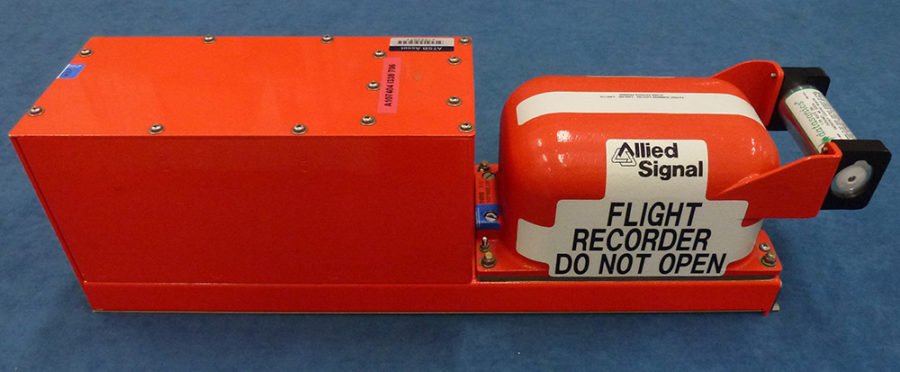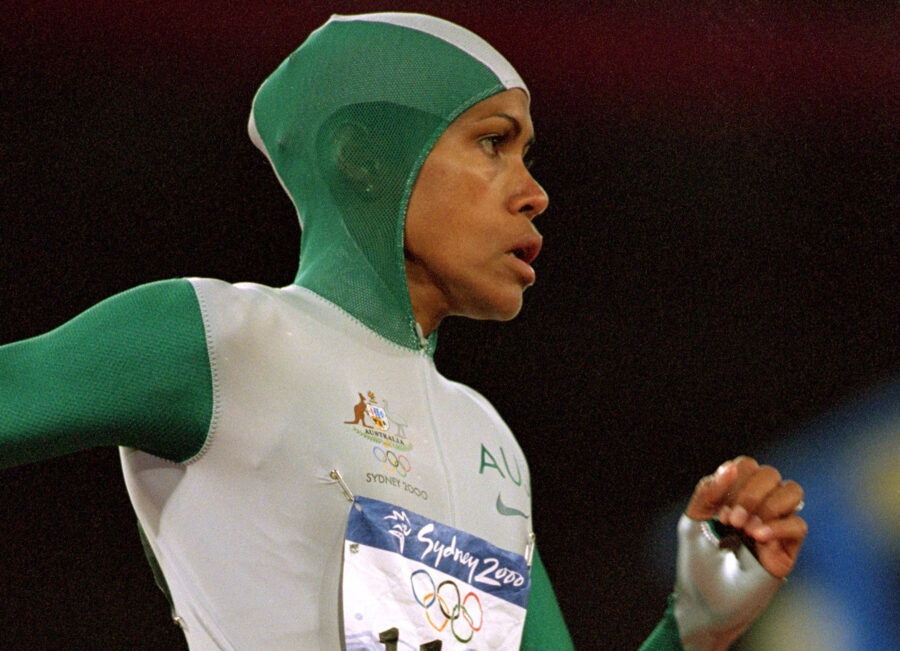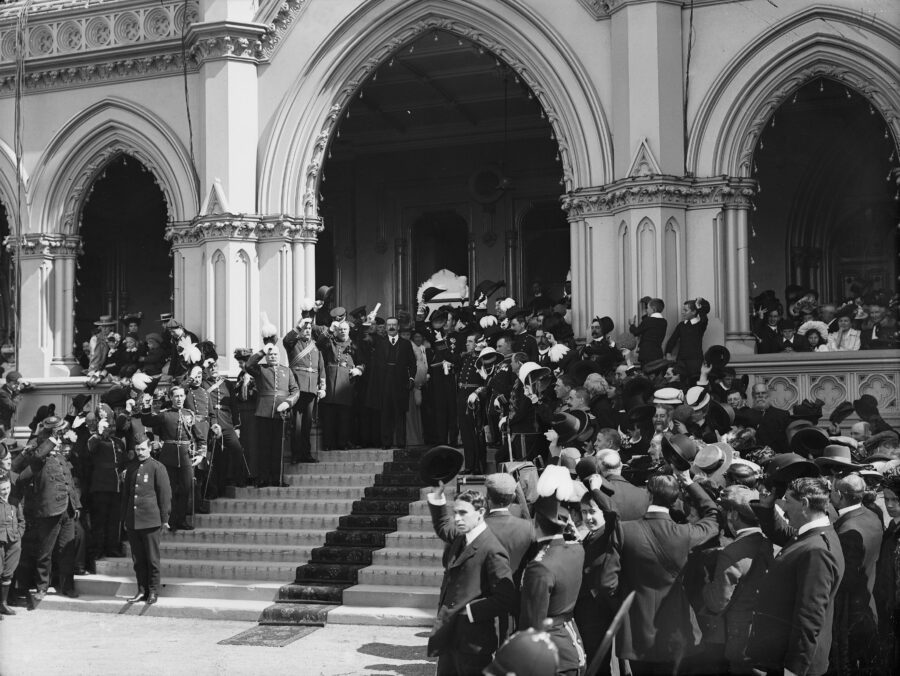On this day: The black box was born

ON 17 MARCH 1953, Melbourne Aeronautical Research Laboratory scientist David Warren brought a ‘game changer’ to the aviation industry, when he invented the world’s first-ever ‘black box’.
In little more than 60 years, it has gone from a single prototype, to a mandatory piece of airline equipment – this journey experiencing a fair share of turbulence along the way.
During the 1950s, David was working on investigations into a series of fatal crashes of the world’s first jet-powered commercial aircraft, the Comet. (It must have been work that hit close to home, having lost his own father in one of Australia’s earliest air disasters in 1934 when Miss Hobart crashed in the Bass Strait).
It was during this time he had his light-bulb moment – if the final moments of the flights had been recorded, they could have provided valuable information.
“Aircraft accidents can be very difficult to investigate if there are no survivors, no eyewitnesses and the aircraft wreckage is fragmented,” explains Neil Campbell, senior transport safety investigator at the Australian Transport Safety Bureau.
“This is exactly the scenario in the 1950s when the British Comet aircraft was developed and had a series of accidents. The accidents were very difficult to explain without black boxes.”
1985 ABC News Interview with Dr David Warren about his 1956 invention of the Black Box Flight Recorder. ABC News: ‘Black Box Flight Recorder Inventor’ first broadcast on 29 June 1985. (Source: Australian Broadcasting Corporation)
And so, in 1953, the first black box was born, featuring a thin metal wire that could continually store flight instrument readings and up to four hours of voice recordings before a crash.
He pitched the idea internationally, but it fell flat, and David – alongside team members Kenneth Fraser, Lane Sear and Dr Walter Boswell – spent the next few years developing the technology, producing a demonstration model in 1957.
In 1958, the idea took flight, when former British air vice-marshal Sir Robert Hardingham visited the laboratory and saw its potential and England’s Ministry of Aviation followed suit soon after.
However it wasn’t until 1960 – seven years later – that Australia caught on, when a Fokker F27 Friendship plane crash in Mackay, Queensland, killed 29 people, and the judge ordered black boxes be fitted in all future Australian aircraft.
Overnight, Australia went from taking little interest, to being the first country in the world to make cock-pit voice recording compulsory.
Evolution of the ‘game changer’
Although based on the original 1953 design, most aircraft today carry two separate black boxes – a Flight Data Recorder (FDR) and a Cockpit Voice Recorder (CVR), each fitted with microchips to store maximum data.
The FDR records the last 25 hours of operation, including altitude and speed, while the CVR records the last two hours of cockpit audio, including crew speech, alarms and engine noise.
Today, some 100,000 black boxes have been fitted to aircraft across the globe.
“Now with flight recorders on board all large aircraft, lessons can be learnt following an accident, reducing the chance that the same type of accident can occur again,” Neil says.
But it’s not just crash investigations they are useful for.
“Recorders can be used to investigate incidents – ‘almost-accidents’ with no damage or injuries – and not just accidents,” Neil says.
“It is better to prevent accidents from occurring by investigating incidents rather than just explaining why accidents occurred.”
With their robust design – built to withstand crash impact, fire and water pressure at depths of more than 6000m – data can be recoverable after significant periods, aiding investigation into long-unsolved crashes.
“The flight recorder fitted to Air France 447 that was lost in the Atlantic Ocean in June 2009 was recovered almost two years after the aircraft crashed, from a depth of 4500m, and its data was able to be recovered,” a Defence spokesperson explains.
According to the Bureau d’Enquêtes et d’Analyses’ final report, a succession of events led to the Airbus 330 – en route from Rio to Paris – plummeting into the ocean, killing all 12 crew members and 216 passengers on board.
Data from the recovered FDR and CVR found a temporary inconsistency in airspeed measurements, disconnection of the autopilot, destabilisation of the flight path and stalling of the plane were all factors in the crash – the last recorded speed as it hurtled downward was 10,912ft per minute.
The timeline of this investigation gives rise to the possibility that vital information pertaining to the mysterious disappearance of Malaysian Airlines flight MH370 in 2014 could still be recoverable if its black box was found today.
Regarded as one of the most significant figures within aviation safety, Dr Warren – who passed away in 2010 – has since received numerous awards for his contributions to the industry.
He was named an Officer of the Order of Australia in 2002, and a Defence building in Canberra was named in his honour in 2014.
Timeline of events
1934 – David Warren’s father is killed in plane crash
1953 – Comet suffers series of fatal crashes
1953 – Invents first ‘black box’
1957 – David and his team produce a demonstration black box
1958 – Sir Robert Hardingham sees its potential
1958 – England’s Ministry of Aviation announces installation of black boxes may soon be mandatory
1960 – Fokker Friendship crash in Mackay
1960 – Australian judge orders black boxes to be fit in all future Australian aircraft
1999 – Awarded the Australian Institute of Energy Medal
2000 – Awarded the Hartnett Medal of the Royal Society of the Arts
2001 – Awarded the Lawrence Hargrave Award of the Aeronautical Society
2002 – Named Officer of the Order of Australia
2010 – Passed away
2014 – Defence building in Canberra named after him
READ MORE:
- Australian inventions that changed the world
- Innovation is the Australian way
- On this day: The birth of Qantas




